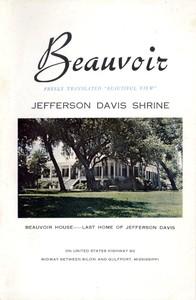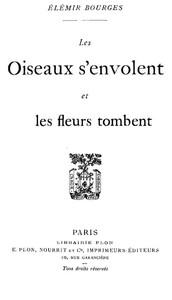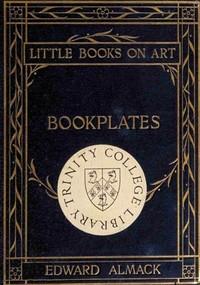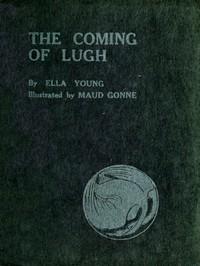Read this ebook for free! No credit card needed, absolutely nothing to pay.
Words: 2046 in 1 pages
This is an ebook sharing website. You can read the uploaded ebooks for free here. No credit cards needed, nothing to pay. If you want to own a digital copy of the ebook, or want to read offline with your favorite ebook-reader, then you can choose to buy and download the ebook.


: Beauvoir: Jefferson Davis Shrine by United Daughters Of The Confederacy Mississippi Division - Davis Jefferson 1808-1889 Homes and haunts Mississippi Biloxi; Beauvoir (Biloxi Miss.)
+Contributions from The Museum of History and Technology: Paper 61+
+Rembrandt's Etching Technique: An Example+
All footnotes appear at the end of this paper.
The observer's attention, from his raised position, is first drawn to the center of the print, attracted by the bright highlights on the trees and barn, then is snapped abruptly to the left side by the figure of the woman outlined against the sky. Now the eye moves slowly across the bottom, noticing the flock of sheep and the shepherd, and is led further by the soft dark line of the creek bank, to pick up the distant town and then the cows on the right. Only after completely circling the composition does one notice the horse, rolling in the grass and joyfully kicking its feet in the air.
Such artistic command seldom comes spontaneously. In Rembrandt's case, it is clearly the result of careful preparation, many years of learning and experience, and hard work in the creation of each picture. Such a process has produced in this print--one of nine landscapes which mark a turning point in 1650--a work of stylistic synthesis, which integrates Rembrandt's previous knowledge and leads on to his later masterpieces.
In 1650 Rembrandt was evidently in a tranquil state of mind. He was 44 years old. Young Hendrickje Stoffels, who had entered his household in 1645 as a maid, was well settled as housekeeper and mistress. Geertghe Dircx--who had been the nurse of Rembrandt's son, Titus, since the death of his wife, Saskia, in 1642--had just been taken to an institution after a nasty breach of promise suit. Rembrandt's finances were in good shape; his insolvency was not to come until 1656, after the international economic crisis of 1653. The artist certainly had the fullest confidence and experience in his working methods, having already done close to 250 prints. This state of well-being is reflected in the fact that of the 27 prints Rembrandt did in the three years, 1650-1652, no fewer than 14 are landscapes of a serene character. This is an unusually large proportion of a single subject and surely reflects the artist's state of mind, which helped him to produce this masterpiece of serenity, humor, and technical virtuosity.
His etching technique can be clearly studied in this print. In summary, all the evidence shows that Rembrandt here laid a foundation of lines on his plate with a single etching. He then mantled the sketch with rich drypoint lines, to give a sensitive chiaroscuro to the finished work. The integration of etching and drypoint is striking. There are few areas of this print that do not contain both kinds of line.
It is very much a modern taste to admire spontaneity more than craft. We must understand that Rembrandt's work was anything but spontaneous in execution. The existence of so many drawings prior to this print certainly suggests that Rembrandt collected his ideas from many sources, on the spot, but did his finished work in the quiet of his studio, with his notes ready at hand. He used the sketches as the raw material for a work of art. Rembrandt said that the only rule that should bind the artist is nature, but he was certainly not distracted by nature. The individual genius here lies in assembling many observations from nature into a work which goes beyond nature and yet appears fresh and natural.
The metal plates he commonly used were of thin, cold-hammered copper, as shown by extant examples. The hammering had the effect of making the metal harder than today's rolled copper sheets. This enabled more prints to be taken from the plate than is possible for a present-day printmaker. Today, we tend to consider drypoint a very fugitive medium, because the burr perishes so quickly under the pressure of the printing press. Rembrandt undoubtedly had fewer inhibitions about drypoint, for he could expect his harder copper to hold up longer, perhaps for as many as fifty excellent prints from the same plate. Hammered copper, unlike the modern rolled variety, is also completely free of grain in the metal. This enables a drypoint needle to move freely in any direction without encountering the resistance of a grain. Here again, Rembrandt had more incentive to use drypoint than a modern artist.
Rembrandt's etching ground has been the subject of considerable discussion. A book published in 1660, nine years before the artist's death, contains a recipe for "The Ground of Rinebrant of Rine." This ground, similar to that described by Bosse as a "soft" ground, consists of two parts wax, one part mastic, and one part asphaltum. There are countless formulae for such grounds, but virtually all are permutations of the same three ingredients, with only slight differences in the proportions. The ground given as Rembrandt's is a thoroughly conventional one.
A knotty problem, however, is introduced by the last line of this 1660 description: "... lay your black ground very thin, and the white ground upon it. This is the only way of Rinebrant...." No elaboration is given. This one line presents a number of problems, not all of which are soluble. To take it at face value is to accept the contemporary evidence that Rembrandt not only used a white ground but used it exclusively. This assertion cannot be taken uncritically.
It will readily be seen that a white ground might be of considerable assistance to an artist. His needle penetrates the white to the copper, giving the familiar effect of a reddish ink line on white paper. A normal ground, without treatment, is virtually transparent, making the etcher's lines rather difficult to see. The most usual procedure, both in the 17th century and today, is to smoke the ground and incorporate the soot with the ground by heating the plate slightly. This gives a black ground, against which the lines appear light, the negative of the ultimate print. The black ground is favored, both out of long-established tradition and because it is very easy to apply. Furthermore, artists today explain that they also enjoy the feeling of working slightly blind, that one of their greatest rewards is the sense of surprise in peeling the first proof print off the plate. For whatever reason, the black ground has been preferred by the great majority of artists, both past and present.
Free books android app tbrJar TBR JAR Read Free books online gutenberg
More posts by @FreeBooks


: Les oiseaux s'envolent et les fleurs tombent by Bourges El Mir - French fiction 19th century FR Littérature







